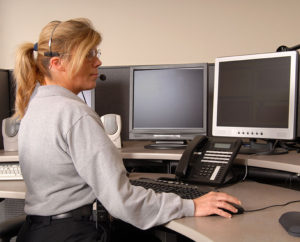 The cell phone revolution in the United States can be largely attributed to Americans’ desire to be able to contact 911 in the event of an emergency. Recent findings estimate that 70 percent of emergency calls are placed from wireless phones. However, calling emergency services from a mobile phone does not work in the same way as using a fixed landline. Therefore, experts have compiled a list of steps that anyone should take if they need to call 911 from their cellular phones.
The cell phone revolution in the United States can be largely attributed to Americans’ desire to be able to contact 911 in the event of an emergency. Recent findings estimate that 70 percent of emergency calls are placed from wireless phones. However, calling emergency services from a mobile phone does not work in the same way as using a fixed landline. Therefore, experts have compiled a list of steps that anyone should take if they need to call 911 from their cellular phones.
First Responder Hurdles
Most emergency communication systems use location-based technology adopted nearly 20 years ago. Mobile phones create delays in response times because they are not associated with a single, fixed location. When you use your cell phone to call 911, their system is only able to pinpoint the location of the nearest cell site. Therein lies the problem, the nearest cell tower could be miles away or in a different jurisdiction altogether. Fortunately, many emergency dispatch computers will now transmit a digital request for your mobile device’s location, but this communication can take seconds, minutes, or may never be completed at all. These hurdles can cause dispatchers to not have proper access to maps leading to misrouted first responders and, therefore, extended response times.
Caller Responsibilities
In light of these location difficulties, law enforcement officials have compiled a list of tips for cell phone users to aid emergency personnel in locating them. First, it is highly recommended that callers provide the location of their emergency and wireless phone number right away. This is because calls to 911 often end before the aforementioned digital request and response can occur. Next, do not try texting or sending photos or videos as 911 call centers still lack the technical ability to receive them. Furthermore, retired federal agent and deputy sheriff, Tim Dees, suggests keeping an old, unconnected cell phone and its 12v charger in your vehicle. These phones can still be used to call 911 in the event of an emergency if your current mobile has been lost, stolen, or depleted of power. If you get disconnected while using an inactive mobile phone, call the dispatcher back right away as there will be no phone number sent to their system that would normally allow them to call you back. Also, cell phone users are encouraged to refrain from setting up speed dial, or disable auto-dial, in order to avoid accidental calls to emergency services. Finally, use your mobile device’s emergency feature and make it visible even when your phone is password protected in order to provide first responders with relevant your contact and medical information.
The FCC estimates that improving 911 response times by just one minute could save 10,000 lives each year. The agency is busy implementing mandates that require 911 centers to have the ability to locate 80 percent of calls by 2021. However, the other 20 percent may still be in danger of unreliable location services and longer emergency response times. Luckily, the tricks listed above can have a huge impact in the response times of emergency services.

